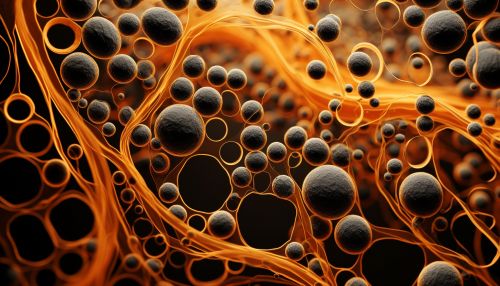Anaerobic respiration
Overview
Anaerobic respiration is a type of cellular respiration where energy is produced from molecules without the use of oxygen. This process occurs in many microorganisms, including yeast and bacteria, and in the muscle cells of animals during strenuous exercise when oxygen supply is insufficient.
Process
Anaerobic respiration begins in the cytoplasm of cells with the process of glycolysis. Here, glucose is broken down into two molecules of pyruvate, producing a small amount of ATP (adenosine triphosphate) and NADH (nicotinamide adenine dinucleotide) in the process. Unlike aerobic respiration, which continues in the mitochondria, anaerobic respiration does not require these organelles.
In the absence of oxygen, the pyruvate and NADH produced in glycolysis undergo different processes depending on the organism and the specific conditions. In yeast and some bacteria, pyruvate is converted into ethanol and carbon dioxide in a process called fermentation. This process also regenerates NAD+ (nicotinamide adenine dinucleotide), allowing glycolysis to continue producing ATP.
In animal cells and some bacteria, pyruvate is converted into lactate through lactic acid fermentation. This process also regenerates NAD+, enabling glycolysis to continue. The accumulation of lactate in muscle cells during intense exercise leads to muscle fatigue and pain.


Efficiency
Anaerobic respiration is less efficient than aerobic respiration. While aerobic respiration can produce up to 38 molecules of ATP from one molecule of glucose, anaerobic respiration produces only 2 ATP molecules. However, anaerobic respiration can occur much more quickly and in conditions where oxygen is not readily available.
Applications
Anaerobic respiration has several practical applications. In the food and beverage industry, it is used in the production of bread, beer, and wine. The carbon dioxide produced during fermentation causes bread to rise and gives beer and wine their characteristic fizz.
In the field of biotechnology, anaerobic respiration is used in the production of biofuels and in waste treatment. Certain bacteria are capable of breaking down organic waste in the absence of oxygen, a process known as anaerobic digestion. This process produces biogas, a renewable source of energy.
